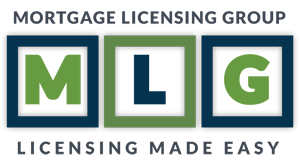How Market Expansion Can Ensure Continued Growth For Mortgage Companies in a Changing Market
While the real estate market may have skidded to a halt early in 2020, housing sales came rushing back by the summer of 2020 as people reconsidered their housing options. Fueled by working remotely and rethinking their work/life balance, people moved to new locations and put in offers for housing at breakneck speed.
According to the Federal Housing Finance Agency, home prices skyrocketed nearly 20 percent in the third quarter of 2021 alone. It’s the largest annual home price increase in history since they first started tracking it for their Housing Price Index.
That was good news for the mortgage industry. The Consumer Financial Protection Bureau recently released in its 2020 Mortgage Market Activity and Trends report that 2020 showed a 65.2 percent increase in the number of closed-end originations, up to 13.6 million from the year before’s 8.3 million.
People were ready to buy, and they jumped at anything that came on the market.
That created cash cows for many mortgage companies.
Not so anymore. With a slowing real estate market and growing economic concerns comes a decrease in the number of shoppers for real estate loans. Mortgage origination volume is expected to decline from $2.26 trillion in 2022 to $ 2.05 trillion in 2023.
What’s a mortgage company to do?
What a growth strategy looks like for your mortgage company
A mortgage business, like any business, will change over time. It’s an ebb and flow as market share advances, economies shift, and customer needs change.
Still, you have a business to run. While planning and implementing a growth strategy might not be the same as it was even a few short months ago, it’s still possible.
It may take out-of-the-box thinking, but taking charge of your market strategy now will allow you to reach more customers with new products and services. It creates scalability when times are tough while giving you the tools you need to stay competitive no matter the economic climate.
If you’re stuck at the moment, unsure where to reach out to find new business, you’re in luck. With a step-by-step plan in place, you’ll quickly be able to look past your current marketing strategy to see easy, lucrative ways you can continue growing your business.
Being adaptable means being able to thrive in many situations. It gives you a way to continue to reach out to customers and provide them with quality service no matter what the current economic times look like. Because there will always be buyers and sellers, it’s just a matter of how you structure your business to reach out to them.
Step 1: Establishing your target market
Every business is in business for one reason: sales. Without money coming in, the company would cease to exist.
For a mortgage company, that means a customer who wants to purchase a new home, refinance an existing loan amount for better rates, or to cash in on current equity.
There is always a need for real estate transactions. Change comes from the approach. To continue to grow means watching the trends and building goals and objectives to keep the money coming in. Without this evaluation, your plan won’t give you the fundamentals necessary to ride through market pressures that inevitably happen as the world changes.
Every business has a specialty. They build infrastructure around the desire to service a specific type of clientele. That customer may be easy to find right around you, but if you have them clearly defined, you can find them anywhere. Typically, when mortgage companies look to expand, they do so in one of three ways:
- Same customer base – new geographic area
- New customer base – same geographic area
- New customer base – new geographic area
If you’re content with your local connections, what products can you add to capture more of the market? If you love the current mortgage product you’re selling, why not expand to a new geographic area? Or maybe it’s time to cast a wider net with a new customer base – you’re ready to try something new, and a new product in a new region seems the best way to do that.
No matter your situation, the clearer you define your customer, the more you’ll understand how to reach out to them. Create an ideal customer profile that includes demographics like:
- Age
- Gender
- Marital status
- Parental status
- Profession
- Financial status
- Geographical location
- Buying habits
- Interests
- Hobbies
- Lifestyle
This is an ongoing activity, one you should continue doing as you learn more about your customers. The more in-depth you get, the better you’ll be able to target your ideal clientele.
Step 2: Market research
Once you have a better idea of who your customer is, you can start researching how you’ll approach them. This requires you to dig deep into the current selling environment, getting to know prospects and customers to better understand what they want.
Who have you been targeting up until now? Will this market continue, level off, or fall off in the coming months? It’s often easy to see what’s coming down the pike. If you know the market will be losing ground for months to come, it can help point you in different directions.
Competitors can also serve as guides. Find your top competitors no matter what market or geographic location you’re looking at. What is their approach? How are they connecting with their customer base? While it’s often easy to see what’s working for them, it’s not about duplicating their efforts. You can utilize the information you learn and take it to other markets.
Market research is often one of the most complex parts of creating a new product or service. It’s not something to skip out on, as it will provide you with the data you need to move forward.
Thanks to the internet, you can do substantial research online to define your new direction clearly. You can thoroughly research any competition you find and evaluate their marketing.
Dig deep to discover trends by looking at various demographic journals and industrial reports. A great place to spend some time is at your local library. A librarian can help you find various directories that will give you information about growth trends and the local economy.
By the time you’re through researching, you should be able to answer questions like:
- Is there room for growth in this new market?
- How well will your products and services be received?
- How will you set yourself apart from your competition?
- Is there an opportunity to make a healthy profit?
Mortgage businesses have the added concern of meeting state and federal licensing. Doing business in different states requires meeting compliance issues and having the right mortgage broker license. As you’re finalizing your decisions for business expansion, be sure you have the tools and resources at hand to help get you there. Mortgage broker licensing doesn’t have to be difficult if you have a plan in place.
Step 3: Decision time
Deciding on a new market or new products and services relies on your research, combined with a bit of instinct. Does it feel right?
Ultimately, you have to love the business you’re in to want to pursue it and continue working in it every day. There’s always risk associated with any business endeavor. You won’t stick with the process if you don’t enjoy it.
It’s also about trial and error. Build a structure around you that’s constantly evaluating opportunities. If it’s not working, adjust. There are plenty of options available in all kinds of economic environments.
Step 4: Building the business
Once your new target market is clearly defined, it’s time to start building up your marketing strategy again. This is about developing sales strategies and implementing new marketing and advertising campaigns to attract new customers.
Since you’re in the business and have had some success with your older campaigns, creating ideas for your new market should be easier. Take the strategies that have worked best in the past, and tweak them to reach new prospects.
Don’t forget that a cohesive campaign is everything. Your prospects and customers should pick up on your branding from the first connection point until the final handshake. Building customer rapport will ensure an ever-growing channel of prospects and referral sources as your new customer list starts to grow. It’s easier to keep clients happy and build success through raving fans than it is to cold-call. Customer service is everything for growing a business.
Next steps
Every step of the way, tracking where you are and monitoring your success is essential. Are you achieving responses to your campaigns? Are they bringing in greater volumes of contacts? Are you converting prospects to customers easily? Are you building a solid referral base?
Change happens all the time. It’s a part of our world. But understanding how to expand to new markets will make change less of a threat.
If you understand that businesses thrive in every economic environment, you’ll have a successful plan in place to reach out to new clients and reach your true potential.
The Mortgage Licensing Group, Inc. is a full-service mortgage licensing firm headquartered in Southern California that is recognized throughout the industry as an experienced and reliable service provider. Established in 2006, our company has been at the forefront of the ever-changing rules and regulations, helping alleviate the often-daunting task of meeting our clientele’s diverse state licensing requirements.

